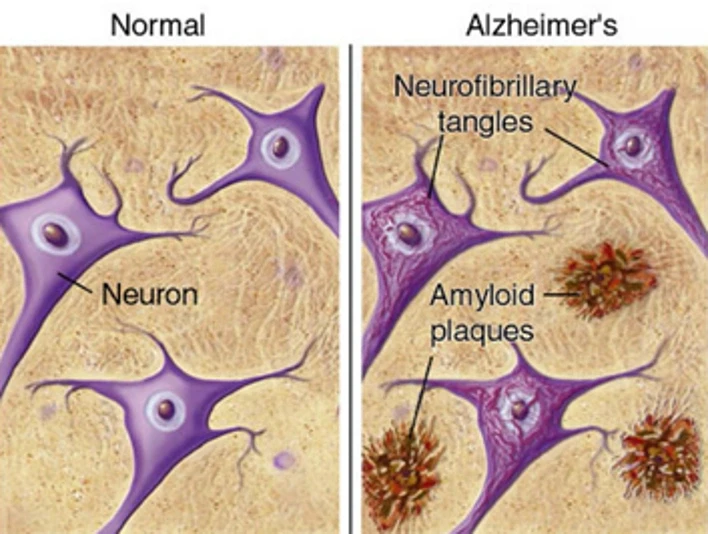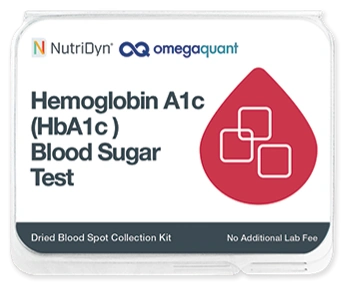Discover the Core Truth about Diabetes: A Must-Read for Everyone in South Sioux City NE
Of all the diseases we help resolve with the 7 Systems Plan, type 2 diabetes is one of my favorites. How quickly this disabling disease can be eliminated in most cases is astonishing.
Years ago, we referred to type 2 diabetes as maturity-onset diabetes. With children now developing this disease, that name is no longer used.
Brandon and his family joined the 7 Systems Plan because he had been diagnosed with type 2 diabetes at age 16. His hemoglobin A1c was 9.6, and the options were to begin medication, which he would most likely need for life, or get rid of the illness.
After hearing about our patients’ tremendous results on the 7 Systems Plan, the family jumped in. Within a few months, they had lost 135 pounds, Brandon’s hemoglobin A1c was 5.6, and his diabetes was gone.
In this newsletter, you will become familiar with the different types of diabetes in South Sioux City NE, including type 3, which is unfamiliar to most.
Although diabetes is a critical concern in the US, many still lack a proper understanding of the disease. Considering its widespread influence, we must understand the essentials of diabetes.
Diabetes represents a cluster of disorders encompassing prediabetes, gestational, type 1, type 2, and type 3, which lead to consistently high blood sugar levels. The category of diabetes, the severity of blood sugar elevation, and the duration that it remains unregulated all contribute to one’s place on the disease spectrum, ranging from prediabetes at the low end to type 3 at the extreme.
How prevalent is Diabetes in South Sioux City NE?
At present, an astounding 30.3 million US inhabitants live with diabetes. When we include those believed to be prediabetic by the Centers for Disease Control, the figures leap to over 100 million individuals affected. The severity of this situation cannot be overstated.
However, even amidst these intimidating statistics, there is hope. You and your family can take proactive measures today to halt and even reverse diabetes naturally. Get an overview with this free training.
Let’s delve deeper into what constitutes diabetes, its types, and the warning signs and symptoms so you can take decisive action now.
Understanding Diabetes
Diabetes is a lingering condition that develops gradually by how the body produces or manages insulin. Insulin is a hormone produced by the pancreas, an organ situated behind your stomach. It enables glucose to enter your bloodstream and be carried to cells in your muscles, fat, and liver, converting it into the energy your body requires.
Immediately after consuming food, blood sugar or blood glucose levels start rising, prompting the pancreas to generate insulin to control the glucose. When all Systems operate at optimum efficiency, insulin, along with another hormone called glucagon, maintains equilibrium in blood glucose levels, safeguarding against excessive (hyperglycemia) or insufficient (hypoglycemia) levels.
All forms of diabetes are characterized by blood sugar levels that exceed normal. This excess could be a result of a malfunctioning pancreas incapable of producing sufficient insulin to counteract the sugar in the blood or due to defective insulin receptors in the body. Regardless of the cause, high blood sugar wreaks havoc on health.
Insulin Resistance Explained
Insulin acts like a key opening the door in a cell. Insulin receptors let glucose into the cells for use as energy. Insulin resistance emerges when cells in the muscles, fat, and liver lose their ability to respond to insulin (the key doesn’t work well), hindering glucose absorption from the bloodstream. Excessive weight gain, substantial belly fat, inactivity, smoking, and inadequate sleep can all increase insulin resistance.
Consequently, the pancreas must generate increasing amounts of insulin to facilitate glucose’s entry into the cells. Over time, the unrelenting demand exhausts pancreas cells, rendering them incapable of keeping up.
Consequences of Unchecked Diabetes
If left unchecked, diabetes damages blood vessels throughout the body, resulting in complications, including impaired circulation in the legs and feet. It doubles the risk of heart attack and stroke and affects the eyes, kidneys, and nerves. Diabetes is responsible for an estimated 1.6 million fatalities each year, according to the World Health Organization, with global rates almost doubling since 1980.
As you can see, it impacts practically the entire body and every System! Assessing your risk factors, tweaking your diet and lifestyle, and avoiding diabetes is well worth the effort. Let’s dig deeper into the different types of diabetes and how their symptoms can determine your position on the diabetes spectrum.
Types of Diabetes: A Closer Look
Type 1 Diabetes: Formerly known as juvenile, type 1 diabetes occurs when the pancreas produces little or no insulin. This disorder affects 1.25 million individuals in the US alone, arising from the immune system’s attack on the insulin-producing cells in the pancreas. It is typically diagnosed in childhood or early teen years and can be related to infant dairy exposure.
Type 1 diabetes is not caused by being overweight. Instead, it has a hereditary component and can be induced by autoimmunity. Like all autoimmune diseases, diet and environment significantly influence the condition. A leaky gut also paves the path to autoimmunity.
Moreover, it’s important to note that damage to the pancreas can also result from a type of virus known as enterovirus, such as congenital rubella syndrome. Recent research hints that your body might regain its ability to produce insulin if this condition is caught early.
The good news is even type 1 diabetics benefit significantly by following the 7 Systems Plan. Lucinda joined the 7 Systems Plan to address her out-of-control type 1 diabetes. She lost 80 pounds, lowered her insulin requirements by two-thirds, and lowered her A1c by 6 points!


Type 2 Diabetes: Type 2 diabetes presents when cells become resistant to insulin, and blood sugar cannot enter the cells. There are 24 million cases of type 2 diabetes in the US.
Historically, type 2 diabetes has not been classified as an autoimmune condition. However, emerging research points to autoimmunity affecting this condition. It tends to develop post-thirty; hence it was previously often labeled “adult-onset” diabetes. However, a rising trend of type 2 diabetes in younger individuals is noted due to the increase in childhood obesity, as was the case with Brandon.
Type 2 diabetes is associated with being overweight (especially belly fat), high blood pressure, and high cholesterol. New research suggests that insulin resistance in type 2 diabetes can also result from B cells (the cells that produce antibodies to combat antigens or “invaders”) and other immune cells attacking the body’s own tissue.
Type 3 Diabetes: Alzheimer’s The connection between being overweight, having type 2 diabetes, and an increased risk of developing Alzheimer’s has long been established. If you have type 2 diabetes, you have quadrupled your risk for Alzheimer’s. Globally, this disease negatively impacts the brain’s neurons, affecting 40 million individuals.
Interestingly, two out of three cases of Alzheimer’s, a type of dementia, are women, primarily manifesting in those over 65. Early onset is relatively rare yet can occur between the mid-30s and early 60s.
Alzheimer’s is a neurodegenerative disease that impairs memory and thinking skills. Nerve cells become entangled, leading to neurofibrillary tangles. Another contributing factor is protein deposits called beta-amyloid plaques, which accumulate in the brain.

The disease originates in the hippocampus, the part of the brain responsible for memory. As neurons die and the disease progresses, significant shrinkage of brain tissue occurs. In advanced stages, brain function continues to decline dramatically.
Recent research reveals that Alzheimer’s develops when neurons in the brain become unresponsive to insulin (insulin resistance), which impairs memory and learning. This lack results from a process known as glycation, elevated blood sugar insulin hasn’t metabolized. High blood sugar “deteriorates” the entire body, including the brain.
Prediabetes: Prediabetes is characterized by high blood sugar, not yet high enough to be deemed type 2 diabetes. Blood sugar levels exceed normal but have not crossed the threshold to warrant a diabetes diagnosis. 84 million American adults, constituting more than one out of three, are prediabetic. Of those, 90% remain unaware of their condition.
Though a person may be oblivious to it, long-term damage to kidneys, blood vessels, and the heart may already be underway. Prediabetes, considered the onset of the diabetes spectrum, is an alarm bell signaling the need for immediate action to preserve health. Without the correct dietary and lifestyle modifications, people with prediabetes typically transition to type 2 diabetes within five years.
Gestational Diabetes: As indicated by its name, this form of diabetes transpires only during gestation or pregnancy. Women with gestational diabetes experience frequent urination, a common occurrence during pregnancy, but they may also excrete larger quantities of urine.
It is usually diagnosed between weeks 24 and 28 by an OB/GYN. Approximately 10% of women have gestational diabetes. In this condition, hormones from the placenta block insulin receptors, preventing a woman from counteracting the high blood sugars prevalent in pregnancy. An expectant mother can effectively manage it through diet, but in severe cases, insulin injections are necessary.
This condition is very harmful to the baby. Pregnant women with uncontrolled gestational diabetes, or any other forms of diabetes, may bear an excessively large baby, complicating delivery and increasing the likelihood of a C-section. They also risk preeclampsia – a severe condition characterized by high blood pressure – and stillbirth.
Gestational diabetes generally resolves naturally after the birth of the baby. However, women who have experienced this condition are at greater risk, between 5% – 10%, of developing type 2 diabetes later in life.
Recognizing the Warning Signs and Symptoms of Types 1, 2, and 3 Diabetes
Prediabetes and gestational diabetes are in themselves warning signs. If you currently live with either of them or have had them in the past, immediate action is required. They act as the body’s alarm system, which, if disregarded, can result in diabetes.
7 Typical Signs and Symptoms of All Forms of Diabetes:
- Constant hunger and fatigue
- Increased thirst and urination
- Dry mouth and itchy skin
- Blurred vision
- Yeast infections
- Slow-healing cuts
- Pain or numbness in feet and legs
Type 2 diabetes may also bring about tingling, pain, or numbness in the hands and feet. Those with type 1 diabetes may experience weight loss despite eating more than usual. Symptoms of type 1 diabetes appear swiftly and require prompt attention.
Type 2 diabetes evolves gradually, so get screened for diabetes if the items below apply to you.
Frequent Signs and Symptoms of Type 2 Diabetes:
- BMI higher than 25, accompanied by additional risk factors
- Above 45 years of age
- History of gestational diabetes
- Experiencing one or more of the symptoms listed above
Individuals with Type 2 diabetes are 50–65% more likely to develop Type 3 diabetes than people with normal blood sugars. Those at risk or in the early stages will likely exhibit one of the warning signs below.
Frequent Signs and Symptoms of Type 3 Diabetes:
- Memory loss that disrupts daily life
- Difficulty in planning or problem-solving
- Confusion about dates, names, and places
- Visual problems, often first evident while driving
- Forgetting common words or losing a train of thought midway through a sentence
- Misplacing objects
- Withdrawal from social activities
- Changes in mood or personality
While any of these changes may coincide with normal aging or other health problems, a blood screening is recommended if these symptoms persist.
The Importance of Testing for Diabetes
Diabetes could be rightly termed an epidemic; it is rampant worldwide. The World Health Organization recently reported that the number of people with diabetes has soared from 108 million in 1980 to 422 million in 2014. Adding to this urgency, the Center for Disease Control reports that one in four people with diabetes remains oblivious. This problem underscores the importance of testing.
Dive Deeper
The process of testing for diabetes doesn’t have to be intimidating; it can be done at home. The single best test for diabetes is called Hemoglobin A1c. Use this link to get a Hemoglobin A1c blood sugar testing kit for an easy way to check your risk. Ideally, you should have a level below 5.5.
How does Diabetes-Induced Elevated Blood Sugar Trigger Heart Issues?
Diabetes plays a part in a process dubbed “glycation.” Glycation stems from insulin’s inability to properly metabolize sugars, which are abundant if you have diabetes. Surplus sugar, which should be metabolized and utilized for energy, lingers in the bloodstream. It attaches to proteins and lipids (fats) and subsequently forms harmful advanced glycation end products (aptly abbreviated AGE!) If you have ever burned toast, you have seen a great example of the formation of AGE.
These AGE molecules do precisely what their name implies: they age the body. These detrimental molecules wreak havoc on the collagen in the body, including the arteries and blood vessels in the heart. They become brittle, and plaque forms in arteries and blood vessels. This vascular damage can lead to heart attacks and strokes.
Advanced glycation end products are regarded as the primary cause of most diabetic complications due to increased blood sugar levels. AGEs are linked to Alzheimer’s (type 3 diabetes), neuropathy (nerve damage causing numbness), retinal (eye) disease, and kidney failure.
Addressing Diabetes
The silver lining is that, for the most part, diabetes can be managed and even reversed through dietary and lifestyle modifications. Countless people have said goodbye to their diabetes with the 7 Systems Plan. The first step is evaluating your risk factors, and I advise everyone to have a yearly blood test. If you have type 1 diabetes, testing for Hashimoto’s and Celiac disease is also prudent.
Additionally, if you have type 2 diabetes and are over 60, it is a good idea to have your functional medicine practitioner evaluate you for early signs of dementia, which can evolve into Alzheimer’s.

Our next newsletter will discuss 7 natural strategies to optimize blood sugar levels.
Recipe of the Week
Enjoy low-glycemic vegetables. (You can find them listed in The 7 Systems Plan book on page 226)
Video Of the Week
Sign up below to get our weekly newsletter
sent directly to your email inbox!
OFFICE HOURS
Monday
8:00am - 6:00pm
Tuesday
8:00am - 6:00pm
Wednesday
8:00am - 6:00pm
Thursday
8:00am - 6:00pm
Friday
8:00am - 6:00pm
Saturday
8:00am - 10:45am
Sunday
Closed
Tri-State Physicians &
Physical Therapy Clinic
3900 Dakota Avenue #6
South Sioux City, NE 68776







